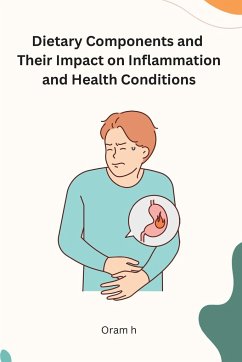: Inflammation has long been viewed as a necessary response to infection or injury. The innate and adaptive immune system are recruited to fight off offending pathogens and drive tissue regeneration. However, in cases where the pathogen is not eliminated, a chronic state of systemic damage ensues (Thurnham, 2015). Excess production of reactive oxygen species (ROS) by myeloid cells, such as macrophages exacerbates inflammation (El-Kenawi & Ruffell, 2017). This magnified and prolonged inflammatory response is composed of inflammatory cytokines, IL-6, TNF-alpha and IL-1 (Thurnham, 2015). The adverse health impacts of inflammation are evident in various health conditions such as poor cognition in aging, anemia of inflammation and viral infections such as the Coronavirus disease 19 (COVID-19). Aging can initiate a persistent and systemic inflammatory response called inflammaging which is associated with increased levels of IL-6, TNF-alpha and NF-kB (McCranor et al., 2013; Sanada et al., 2018). IL-6 increases the progression from acute to chronic inflammation (Thurnham, 2015). Deterioration of the gut microbiota, cell debris accumulation, increasing number of senescent cells and dysregulation of the innate immune system have been attributed to inflammaging (Sanada et al., 2018). For instance, changes to innate immune system biomarkers are linked with neurodegeneration (Thurnham, 2015). The older generation forms a large segment of the population globally and in the year 2015 in the US, 61.7 million people were 65 years or older. It is estimated that 12% (1 billion) of the world's population will be comprised of the elderly in 2030 with a projected increase of 5% by 2050 (Roberts et al., n.d.). In line with this increase is the associated burden of disease. In 2017, according to the Centers for Disease Control and Prevention, 22% of adults 65 years and above lived with fair or poor health (FastStats, 2020). Aging and age-related disorders further accelerates brain neuronal dysfunction and loss resulting in decline in processing speed, attention and executive function (Cohen et al., 2016; Murman, 2015). Cognitive decline in aging is multifaceted (Murman, 2015) and is attributed to factors such as impaired calcium homeostasis, mitochondrial dysfunction, oxidative damage, inflammation and increased susceptibility to stress leading to epigenetic modifications that affect learning, memory and synaptic processes in the brain (Harman & Martín, 2020). Aging is also associated with anemia due to increased inflammation. This is because inflammation upregulates IL-6 and hepcidin leading to impaired erythropoiesis and consequently anemia of inflammation (AI). AI is the most common anemia in hospitalized patients and the second most frequent anemia worldwide (Kassebaum et al., 2014). Hepcidin is a peptide hormone that drives anemia in inflammatory states by inhibiting iron release from the liver and macrophages leading to hypoferremia (McCranor et al., 2013; Steinbicker & Muckenthaler, 2013a). In an aged mice model of anemia, iron sequestration was attenuated in hepcidin knock out mice (McCranor et al., 2013). Beyond poor cognition and anemia, inflammation also plays a role in COVID-19 progression. COVID-19 became an epidemic in 2019 with over 95 million cases and 1 million deaths in the US as at September 2022 (CDC, 2020c).







